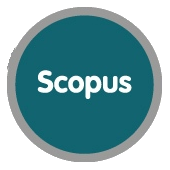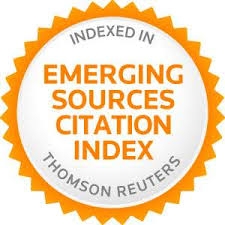Estructura dimensional de las competencias del siglo XXI en los estudiantes universitarios de educación
Resumen
La nueva Sociedad del Conocimiento requiere nuevas competencias, que son conocidas como Competencias del siglo XXI. Estas competencias se subdividen en competencias de pensamiento y competencias de orden superior en tecnologías de información y comunicación. El objetivo de este artículo es determinar la estructura dimensional de las competencias del siglo XXI, junto con los factores personales clave en este sentido. Se trata de un estudio correlacional, basado en un diseño de encuesta, cuya muestra está constituida por estudiantes de los grados de Pedagogía y Educación Social de la Universidad de Valencia, seleccionados por muestreo no probabilístico y accidental, recogiendo la información mediante dos cuestionarios. Los resultados señalan que las competencias para el siglo XXI se componen de dos subconjuntos, las competencias del pensamiento de orden superior y las competencias TIC, que forman un todo. Además, se ha encontrado que los factores personales tienen un impacto significativo en esta estructura. Se sugiere que las políticas educativas deben abordar ambos aspectos, a fin de capacitar a los ciudadanos incluidos en la Sociedad del Conocimiento.
Palabras clave
Referencias
Alberta Education (2011). Framework for student learning: Competencies for engaged thinkers and ethical citizens with an entrepreneurial spirit. Edmonton: Author. Disponible en: https://open.alberta.ca/dataset/4c47d713-d1fc-4c94-bc97-08998d93d3ad/resource/58e18175-5681-4543-b617-c8efe5b7b0e9/download/5365951-2011-framework-student-learning.pdf
Ananiadou, K. & Claro, M. (2009). 21st century skills and competences for new millennium learners in OECD countries. Organisation for Economic Cooperation and Development. EDU Working paper 41. doi: https://doi.org/10.1787/218525261154
Anderson, R. E. (2008). Implications of the information and knowledge society for education. En J. Voogt & G. Knezek (Eds.), International handbook of information technology in primary and secondary education (pp. 5-22). New York: Springer. doi: https://doi.org/10.1007/978-0-387-73315-9_1
Arras, A. M. D. G., Torres, C. A., & García-Valcárcel, A. (2011). Competencias en Tecnologías de Información y Comunicación (TIC) de los estudiantes universitarios. Revista latina de comunicación social, (66), 130-152. doi: https://doi.org/10.4185/RLCS-66-2011-927-130-152
Azizi-Fini, I., Hajibagheri, A., & Adib-Hajbaghery, M. (2015). Critical thinking skills in nursing students: a comparison between freshmen and senior students. Nursing and midwifery studies, 4(1), e25721. doi: https://doi.org/10.17795/nmsjournal25721
Baturay, M. H., Gökçearslan, Ş., & Ke, F. (2017). The relationship among pre-service teachers' computer competence, attitude towards computer-assisted education, and intention of technology acceptance. International Journal of Technology Enhanced Learning, 9(1), 1-13. doi: https://doi.org/10.1504/IJTEL.2017.10003119
Betancourth-Zambrano, S., Muñoz-Moran, K. T., & Rosas-Lagos, T. J. (2017). Evaluación del pensamiento crítico en estudiantes de educación superior de la región de Atacama-Chile. PROSPECTIVA. Revista de Trabajo Social e Intervención Social, (23), 199-223. doi: https://doi.org/10.25100/prts.v0i23.4594
Binkley, M., Erstad, O., Hermna, J., Raizen, S., Ripley, M., Miller-Ricci, M., & Rumble, M. (2012). Defining 21st century skills. En P.E. Griffin, B. McGaw, and E. Care (Eds.), Assessment and teaching of 21st century skills (pp. 17–66). Dordrecht: Springer. doi: https://doi.org/10.1007/978-94-007-2324-5_2
Cabezas-González, M., Casillas-Martín, S., Sanches-Ferreira, M., & Teixeira-Diogo, F. L. (2016). ¿Condicionan el género y la edad el nivel de competencia digital? Un estudio con estudiantes universitarios. Fonseca, Journal of Communication, 15(15), 109-125. doi: https://doi.org/10.14201/fjc201715109125
Calvani, A., Fini, A., & Ranieri, M. (2010). Digital Competence in K-12: theoretical models, assessment tools and empirical research. Anàlisi: quaderns de comunicació i cultura, (40), 157-171. doi: https://doi.org/10.7238/a.v0i40.1151
Centeno Moreno, G., & Cubo Delgado, S. (2013). Evaluación de la competencia digital y las actitudes hacia las TIC del alumnado universitario. Revista de Investigación Educativa, 31(2), 517-536. doi: https://doi.org/10.6018/rie.31.2.169271
Chai, C. S., Deng, F., Tsai, P.-S., Koh, J. H. L., & Tsai, C.-C. (2015). Assessing multidimensional students’ perceptions of twenty-first-century learning practices. Asia Pacific Education Review, 16(3), 389–398. doi: https://doi.org/10.1007/s12564-015-9379-4
Cheung, W., & Huang, W. (2005). Proposing a framework to assess Internet usage in university education: an empirical investigation from a student's perspective. British Journal of Educational Technology, 36(2), 237-253. doi: https://doi.org/10.1111/j.1467-8535.2005.00455.x
Claro, M., Preiss, D. D., San Martín, E., Jara, I., Hinostroza, J. E., Valenzuela, S., Cortés, F. & Nussbaum, M. (2012). Assessment of 21st century ICT skills in Chile: Test design and results from high school level students. Computers & Education, 59(3), 1042-1053. doi: https://doi.org/10.1016/j.compedu.2012.04.004
Comisión Europea (2018). ANEXO de la Propuesta de Recomendación del Consejo relativa a las competencias clave para el aprendizaje permanente. Disponible en https://eur-lex.europa.eu/resource.html?uri=cellar:395443f6-fb6d-11e7-b8f5-01aa75ed71a1.0013.02/DOC_2&format=PDF.
Díaz-García, I., Cebrián-Cifuentes, S., & Fuster-Palacios, I. (2016). Las competencias en TIC de estudiantes universitarios del ámbito de la educación y su relación con las estrategias de aprendizaje. RELIEVE, 22(1). doi: http://doi.org/0.7203/relieve.22.1.8159
Drent, M. & Meelissen, M. (2008). Which factors obstruct or stimulate teacher educators to use ICT innovatively? Computers and Education. 551(1), 187-199. doi: https://doi.org/10.1016/j.compedu.2007.05.001
Ertmer, P. A. (1999). Addressing first-and second-order barriers to change: Strategies for technology integration. Educational Technology Research and Development, 47(4), 47-61. doi: https://doi.org/10.1007/BF02299597
Fraillon, J., Schulz, W., & Ainley, J. (2013). International Computer and Information Literacy Study: Assessment framework. Amsterdam: IEA.
Fundación ECDL. (s.f.). The European Computer Driving Licence Foundation Limited. Disponible en http://www.ecdl.org/
International Society for Technology in Education (ISTE) (2016). ISTE Standards for Students. Disponible en: http://www.iste.org/standards/standards
Gargallo López, M., Suárez-Rodríguez, J.M., Almerich, G., Verde Peleato, I. & Cebriá Iranzo, Mª. A. (2018, en prensa). Validación dimensional del Student Engagement Questionnaire (SEQ) en población universitaria española. Capacidades del alumno y entorno de enseñanza/aprendizaje. Anales de Psicología, 34(2).
Kember, D. & Leung, D. (2005). The influence of the teaching and learning environment on the development of generic capabilities needed for a knowledge-based society. Learning Environments Research, 8, 245-266. doi: https://doi.org/10.1007/s10984-005-1566-5
Kember, D. & Leung, D. (2009). Development of a questionnaire for assessing students’ perceptions of the teaching and learning environment and its use in quality assurance. Learning Environments Research, 12, 15-29. doi: https://doi.org/10.1007/s10984-008-9050-7
Kember, D. & Leung, D. (2011). Disciplinary differences in student ratings of teaching quality. Research in Higher Education, 52, 278-299. doi: https://doi.org/10.1007/s11162-010-9194-z
Kember, D., Leung, D. & Ma, R. (2007). Characterizing learning environments capable of nurturing generic capabilities in higher education. Research in Higher Education, 2, 48(5), 609-632. doi: https://doi.org/10.1007/s11162-006-9037-0
Lim, C. P., Zhao, Y., Tondeur, J., Chai, C. S., & Chin-Chung, T. (2013). Bridging the gap: Technology trends and use of technology in schools. Journal of Educational Technology & Society, 16(2), 59–68.
Molina-Patlán, C., Morales-Martínez, G. P., & Valenzuela-González, J. R. (2016). Competencia transversal pensamiento crítico: Su caracterización en estudiantes de una secundaria de México. Revista Electrónica Educare, 20(1), 1-26. doi: https://doi.org/10.15359/ree.20-1.11
P21 (2015). P21 Framework Definitions. Partnership for 21st Century Skills. Disponible en: http://www.p21.org/storage/documents/docs/P21_Framework_Definitions_New_Logo_2015.pdf.
Red de Bibliotecas Universitarias (REBIUN) (2016). Marco de competencia digital para estudiantes de grado. CRUE- REBIUN. Disponible en http://www.rebiun.org/competenciadigital/Documents/Propuesta_adaptacion_competenciadigital_estudiante_grado_0916.pdf.
Sang, G., Liang, J. C., Chai, C. S., Dong, Y., & Tsai, C. C. (2018). Teachers’ actual and preferred perceptions of twenty-first century learning competencies: a Chinese perspective. Asia Pacific Education Review, 1-11. doi: https://doi.org/10.1007/s12564-018-9522-0
Schleicher, A. (2016). Desafíos para PISA. RELIEVE, 22(1). doi: http://doi.org/10.7203/relieve.22.1.8429
Torres-Gastelú, C. A., & Kiss, G. (2016). Perceptions of Students towards ICT Competencies at the University. Informatics in Education, 15(2), 319-338. doi: https://doi.org/10.15388/infedu.2016.16
UNESCO (2015). Replantear la educación. ¿Hacia un bien común mundial? Paris: UNESCO.
Van Braak, J. P. (2004). Domains and determinants of university students’ self-perceived computer competence. Computers & Education, 43(3), 299-312. doi: https://doi.org/10.1016/j.compedu.2003.09.006
van de Oudeweetering, K., & Voogt, J. (2018). Teachers’ conceptualization and enactment of twenty-first century competences: exploring dimensions for new curricula. The Curriculum Journal, 29(1), 116-133. doi: https://doi.org/10.1080/09585176.2017.1369136
Van Laar, E., van Deursen, A. J., van Dijk, J. A., & de Haan, J. (2017). The relation between 21st-century skills and digital skills: A systematic literature review. Computers in human behavior, 72, 577-588. doi: https://doi.org/10.1016/j.chb.2017.03.010
Verhoeven, J. C., Heerwegh, D., & De Wit, K. (2016). ICT learning experience and research orientation as predictors of ICT skills and the ICT use of university students. Education and Information Technologies, 21(1), 71-103. doi: https://doi.org/10.1007/s10639-014-9310-3
Voogt, J., & Pareja-Roblin, N. (2012). A comparative analysis of international frameworks for 21st century competences: Implications for national curriculum policies. Journal of Curriculum Studies, 44(3), 299-321. doi: https://doi.org/10.1080/00220272.2012.668938
Voogt, J., Erstad, O., Dede, C., & Mishra, P. (2013). Challenges to learning and schooling in the digital networked world of the 21st century. Journal of computer assisted learning, 29(5), 403-413. doi: https://doi.org/10.1111/jcal.12029
Vuorikari, R., Punie, Y., Carretero Gomez S., & Van den Brande, G. (2016). DigComp 2.0: The Digital Competence Framework for Citizens. Update Phase 1: The Conceptual Reference Model. Sevilla: Unión Europea.
World Economic Forum (2015). New vision for education: Unlocking the potential of technology. Ginebra: World Economic Forum. Disponible en: http://www3.weforum.org/docs/WEFUSA_NewVisionforEducation_Report2015.pdf.
Yalman, M., Basaran, B., & Gonen, S. (2016). Information and Communication Technology Skills of Students Using the Distant Education Management System to Complete Their Theology Undergraduate Education. Journal of Education and Training Studies, 4(10), 95-104. doi: https://doi.org/10.11114/jets.v4i10.1752
Enlaces refback
- No hay ningún enlace refback.


